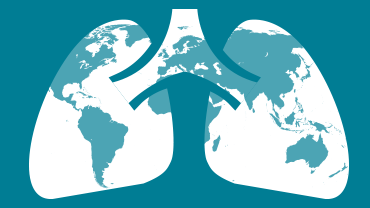Despite 4% decline in EU/EEA TB cases, challenges remain in achieving targets
A joint ECDC – WHO report released today shows an overall decline of 4% in the number of notified tuberculosis cases between 2014 and 2018 in the EU/EEA countries. Although this is evidence of improvement, the treatment success rates for new and relapse cases, as well as for patients with drug-resistant TB are still below regional and global targets. Improvements can be achieved through, for example, better management of latent TB as a preventative measure against active TB, says ECDC.
The report 'Tuberculosis surveillance and monitoring in Europe 2020 (2018 data)’ states that in 2018 in the EU/EEA and the UK, there were 52 862 tuberculosis patients, of which 999 suffered from difficult-to-treat multidrug-resistant tuberculosis (MDR TB). An estimated 3 730 people died from tuberculosis in 2018 in the EU/EEA and the UK.
The 2030 target at EU/EEA level is a notification rate of 2.4 per 100 000 as stipulated by the United Nations Sustainable Development Goal 3 target. This is an 80% reduction of the 2015 TB notification rate of 11.9 cases per 100 000 people.
In 30 EU/EEA countries and the UK, 52 862 TB cases were reported in 2018, with a notification rate of 10.2 per 100 000 population. MDR TB was reported for 999 (3.7%) of 26 881 cases with the relevant drug-susceptibility test (DST) results and XDR TB was reported for 19.6% of 808 MDR TB cases with the relevant DST results.
"Overall, the decreasing tuberculosis notification rates observed in most countries are a sign that we are going in the right direction. However, it will still be challenging to achieve an 80% reduction in the 2015 incidence rate by 2030. This is not the time to be complacent, and without continuous efforts in the years to come we will not be able to reach the agreed targets,” said Andrea Ammon, ECDC Director.
Latent tuberculosis
It is estimated that about a quarter of the world’s population has latent tuberculosis. This constitutes a large human reservoir of people that could potentially develop active tuberculosis. In low incidence countries (the majority of countries in EU/EEA are classified as such), the greater part of tuberculosis cases are a result of latent tuberculosis progressing into active disease.
The 2018 Political declaration of the high-level meeting of the General Assembly on the fight against tuberculosis, states that 30 million people with latent tuberculosis should be treated preventively by 2022. Effective treatment of latent tuberculosis reduces the risk of progression to active disease by 60-90% and thus decreases overall tuberculosis incidence rates. Particular attention should be given to at-risk groups such as children under five, contacts of infectious tuberculosis cases and people living with HIV/AIDS.
Screening for active tuberculosis and latent tuberculosis should also be promoted to contribute to the detection of those cases, especially in at-risk populations.
According to the World Health Organization End TB strategy, all countries should have a national TB control strategy in place. In low incidence countries, this should include treatment of latent tuberculosis. However, several EU/EEA countries do not have plans in place and reporting of latent tuberculosis treatment coverage in at-risk groups is largely non-existent. As an illustration, only two countries reported on latent tuberculosis treatment coverage in childhood tuberculosis contacts aged under five years in 2018, and no country reported on the indicator latent tuberculosis treatment coverage among people living with HIV.
Background information
Latent tuberculosis
This is a state of the disease where persons are infected, but have no evidence of clinically manifest active tuberculosis and are not infectious.
World Tuberculosis Day is observed on 24 March each year around the world. Its overall goal is to raise awareness about the burden of TB worldwide and the status of TB prevention and control efforts.
Sustainable Development Goal 3.3: By 2030, end the epidemics of AIDS, tuberculosis, malaria and neglected tropical diseases and combat hepatitis, water-borne diseases and other communicable diseases. The indicator is tuberculosis incidence per 100 000 population. The WHO End TB Strategy targets for measuring progress towards the SDGs: tuberculosis incidence 80% lower in 2030 compared to 2015; the number of tuberculosis deaths 90% lower; and no family should face catastrophic costs due to tuberculosis.
The United Nations High-level Meeting on TB was held on 26 September 2018 at the UN General Assembly in New York, resulting in a political declaration endorsed by Heads of State and Government outlining the key commitments that must be met for the world to end the TB epidemic by 2030, as called for in the UN Sustainable Development Goals.
The European Union and European Economic Area and the UK comprises of the 31 countries with a population of 517 million.
Read the report
Surveillance report
Tuberculosis surveillance and monitoring in Europe 2020 –2018 data
This report provides an overview of the latest TB epidemiological situation and is published jointly by the WHO Regional Office for Europe and the European Centre for Disease Prevention and Control (ECDC).







